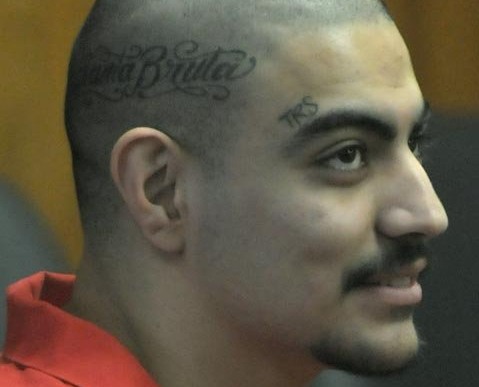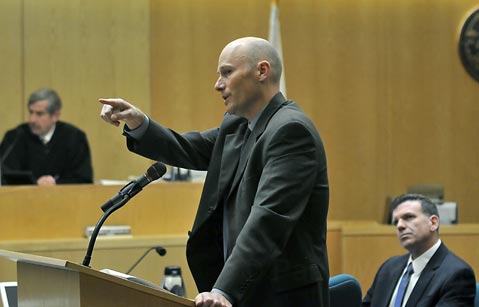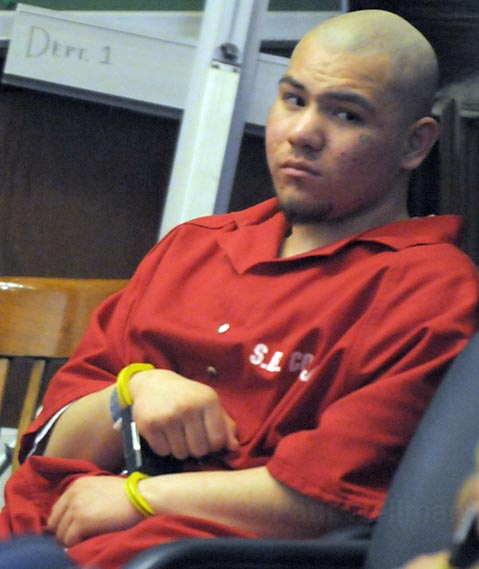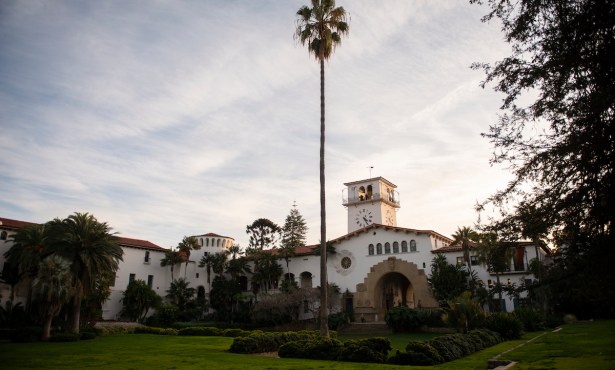Jury Begins Mize Trial Deliberations
Four Eastside Gang Members Face Murder and Attempted Murder Charges

A Santa Barbara jury has begun deliberations to decide what involvement four men — juveniles at the time — had in the July 2007 stabbing death of 16-year-old Lorenzo Carachure.
After hearing testimony over a three-week span which unfolded much like the first trial for Ruben Mize, Bryan Medinilla, Raul Diaz, and Ricardo Nava, the 12 jurors — who only started deliberating late Thursday afternoon before taking Friday off — heard from prosecutor Hans Almgren and attorneys representing the foursome, each offering their last portrayal of what they believe the evidence shows.
The first trial in the case, conducted last summer, ended with a hung jury, and the judge eventually declared a mistrial. After settlements could not be reached, the four were retried, with this second trial commencing the last day of January.

Each of the four face a murder charge and two attempted murder charges, with gang enhancements accompanying the charges. Almgren claims that the four packed into a truck with others and drove to the Westside, where Diaz struck Carachure in the head with a tire jack, leading to Mize and Medinilla stabbing the boy while some of the crew engaged Carachure’s cousin and friend.
Defense attorneys said that while the jury heard an abundance of evidence about the quartet’s involvement in gangs, Almgren didn’t prove beyond a reasonable doubt they killed Carachure. James Crowder, attorney for Medinilla, said the gang evidence was presented to “demonize” them. “It’s because they want to prejudice you against them … make you not like them … want you to clean up the neighborhood,” he said. But just because they are part of the Eastside does not mean they are guilty of a crime, Crowder asserted.
“You have heard a lot of information about gangs that has nothing to do with this case,” said Neil Levinson, attorney for Ricardo Nava. He said there was no physical evidence, no recorded statement, no knives, and no DNA that showed his client’s involvement.
There were, however, several people — former gang members and associates — who testified against the four. The defense attorneys scrutinized the testimonies of Emilio Mora, Robert Martinez, Octavio Moran, Carlos Diaz, and Jose Herrera, all of whom are receiving significantly lighter sentences in their own criminal cases in exchange for their testimony. “They were being paid, in a certain sense, for their testimony,” said Joe Allen, attorney for Mize. Whether consciously or unconsciously, he said, they “shade their story in a way that they think the prosecution wants to hear.” Crowder called Mora a “known liar.” Defense attorneys also pointed out that another witness, Noe Carachure, admitted he lied on the stand during the first trial.

But Almgren said that while there were indeed deals arranged for some who testified, it was necessary because they wouldn’t have come forward otherwise. And it was up to the jury to gauge the honesty of each witness.
Almgren also said there was plenty of evidence to suggest Carachure’s death was the result of premeditation and deliberation. “They had a plan and they executed it,” Algren said, pointing out that the group got a driver, armed themselves, and showed knives to each other, later adding, “They were going hunting for human beings — that’s premeditation.”
As in the first trial, Mize came across as the most culpable, thanks to rap songs he wrote and a recorded confession — made during a conversation between him and his cousin, Christopher Diaz, who was working with authorities — of his involvement in the murder. Mize, in the music lyrics, talks about how he “can’t wait ‘til the day I take someone’s life.” On the undercover recording, Mize told his cousin about the stabbing, and tells him he went for a “kill shot” at one point in the attack.
Christopher Diaz also testified in the trial that Medinilla told a group he stabbed Carachure in the stomach, though Diaz wasn’t wearing a wire at the time.
The guilt of each person must be weighed separately. But even if not all of them were involved in the death of Carachure, aiding and abetting can lead to guilt. “People that aid and abet others knowing what they’re going to do are also guilty,” said Almgren. But the defense attorneys tried to distance their clients from Mize.
Diaz, his attorney Sam Eaton said, would’ve had to know the weapons were there, which he claims he didn’t, and there’s no evidence that Diaz intended to kill anyone. In fact, the attorneys argued, there were hundreds of fights involving gang members around 2007, but very rarely did they end in death. It goes to show, they said, that the quartet didn’t intend to kill. The Eastside gang just went over “to do what unfortunately the Eastside and Westside do: to fight,” Crowder said.



